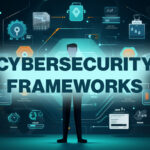The Importance of Employee Training in Cybersecurity Risk Management
In an increasingly interconnected world, where businesses rely heavily on digital infrastructures, the importance of cybersecurity cannot be overstated. While organizations often invest in advanced technologies and sophisticated security measures, the human element remains a critical factor in managing cybersecurity risks. Employee training plays a vital role in enhancing an organization’s cybersecurity posture and protecting sensitive data from threats. This article explores the significance of employee training in cybersecurity risk management and outlines effective strategies for implementation.
Understanding Cybersecurity Risks
Cybersecurity risks can come from various sources, including external threats such as hackers, malware, and phishing attacks, as well as internal risks like human error and negligence. According to numerous studies, a significant percentage of security breaches are caused by human mistakes. Employees may unintentionally expose sensitive information through actions such as clicking on malicious links, using weak passwords, or failing to follow security protocols. Therefore, fostering a security-aware culture through comprehensive employee training is essential to mitigate these risks.
Why Employee Training Matters
1. Reducing Human Error
Human error is often the weakest link in cybersecurity. Training employees to recognize and respond appropriately to potential threats can significantly reduce the likelihood of security incidents. For example, when employees are educated about phishing tactics, they are more likely to spot suspicious emails and avoid falling victim to scams. Regular training sessions can reinforce these concepts and keep security top of mind.
2. Promoting a Culture of Security
A well-structured training program helps instill a culture of security within an organization. When employees understand the importance of cybersecurity and their role in maintaining it, they are more likely to adopt secure practices in their daily activities. This cultural shift fosters a sense of responsibility among employees, encouraging them to take proactive measures to protect sensitive information.
3. Compliance with Regulations
Many industries are subject to strict regulatory requirements regarding data protection and cybersecurity. Training employees on these regulations ensures that they understand their obligations and the consequences of non-compliance. This awareness can help organizations avoid costly fines and reputational damage associated with data breaches.
4. Enhancing Incident Response
In the event of a cybersecurity incident, a well-trained workforce is better equipped to respond effectively. Training can include specific protocols for reporting security incidents, assessing the situation, and implementing containment measures. This preparedness can minimize the impact of a breach and facilitate a quicker recovery.
Implementing Effective Training Programs
To maximize the effectiveness of employee training in cybersecurity risk management, organizations should consider the following strategies:
1. Tailor Training Content
Training should be relevant to employees’ roles and responsibilities. Customized training programs that address specific threats related to different departments can enhance engagement and retention. For example, the training for IT staff may focus on technical vulnerabilities, while sales teams may need to learn about protecting customer data.
2. Use Interactive and Engaging Methods
Utilizing interactive training methods, such as simulations, quizzes, and hands-on exercises, can make learning more engaging. Gamified elements can motivate employees to participate actively and retain information better.
3. Conduct Regular Training Sessions
Cyber threats are constantly evolving, making it essential for organizations to provide ongoing training. Regular sessions, whether quarterly or annually, ensure that employees remain informed about the latest threats and security practices. Refresher courses can help reinforce critical concepts.
4. Encourage Open Communication
Fostering an environment where employees feel comfortable discussing security concerns is crucial. Encouraging open communication allows staff to report suspicious activity without fear of reprimand, creating a more vigilant organization.
Conclusion
In the realm of cybersecurity, technology alone is not enough to ensure safety; the human element is equally important. Employee training is a vital component of effective cybersecurity risk management, helping to reduce human error, promote a culture of security, and ensure compliance with regulations. By investing in comprehensive training programs, organizations can empower their workforce to recognize and respond to threats, ultimately strengthening their overall cybersecurity posture. In a landscape where cyber threats are ever-present, prioritizing employee training is not just a best practice—it is an essential strategy for safeguarding sensitive information and maintaining trust.


